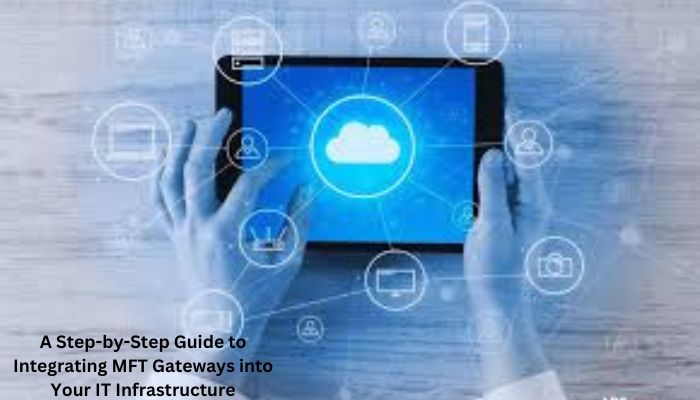Organizations increasingly integrate Managed File Transfer (MFT) Gateways into their IT infrastructures due to their robust security features and compliance capabilities. This integration can enhance data transfer security and efficiency across networks. However, careful planning and execution are necessary to avoid disruptions and maximize the benefits of the MFT Gateway. MFT Gateways enable secure and efficient data transfer between systems. To integrate an MFT Gateway into an existing IT infrastructure, it’s crucial to understand the IT landscape and the solution’s capabilities to assess current data transfer protocols, security measures, and compliance requirements.
What is an MFT Gateway?
An MFT Gateway is a secure platform that manages, automates, and monitors file transfers, surpassing traditional FTP protocols. It offers security features, monitoring capabilities, and compliance measures, ensuring file transfers meet regulatory requirements and provide end-to-end visibility and control over the data transfer process. It goes beyond traditional FTP to give a comprehensive solution.
Select the Right MFT Gateway
The selection of the proper MFT Gateway is crucial for successful integration, as it should meet the organization’s current needs and offer scalability for future growth, with features like multiple file transfer protocols, high-level encryption, automation capabilities, and detailed logging and reporting tools.
Initial Strategy and Analysis
A thorough IT infrastructure assessment is necessary to integrate an MFT Gateway, identifying all systems that will interact with it, including internal applications, external communication points, and cloud services. Understanding data residing and transfer is crucial for mapping the integration process. Involving stakeholders like IT security teams, network architects, and compliance officers ensures the MFT Gateway meets security standards and compliance requirements while supporting existing workflows.
Interaction Points
- Central hub for all file transfers in organizations.
- Integration points include:
– Enterprise Applications: Connects seamlessly with ERP CRM for secure data transfers.
– Cloud Services: Ensures secure data movement to and from the cloud.
– Legacy Systems: Connects older systems with special adapters or middleware for significant challenges.
After integrating and testing the MFT Gateway, all end-users should undergo training sessions to ensure effective and safe system usage, along with comprehensive documentation detailing processes, user guides, and troubleshooting tips.
Considerations for security
Integrating an MFT Gateway requires a strong focus on security. Secure protocols like HTTPS, SFTP, and FTPS should be used for data transfers. A gateway proxy can manage connections and enhance security by providing encryption, deep packet inspections, and blocking malicious traffic. Access control is also crucial, allowing users to only interact with data necessary for their work, minimizing the risk of data leaks or unauthorized access.
Verification and confirmation
The MFT Gateway system must undergo rigorous testing before going live, covering all functionality, file transfer processes, security protocols, and system integration and ensuring compliance with data protection regulations to avoid legal penalties.
Features of MFT Gateways
- Security: Utilizes advanced encryption standards to secure data in transit and at rest. Supports secure protocols like SFTP, FTPS, and HTTPS.
- Automation: Automates complex file transfer workflows, reducing human error and freeing resources for strategic activities.
- Compliance and Auditing: Facilitates compliance with HIPAA, GDPR, and PCI DSS standards through comprehensive logging and reporting tools.
- Centralized Control: Offers a centralized platform for managing all file transfer activities, providing visibility into data flows and simplifying enterprise-wide operations.
Conclusion
Integrating an MFT Gateway into an existing IT infrastructure requires careful planning, execution, and ongoing management. Organizations can significantly enhance their data transfer capabilities, streamline workflows, and operate efficiently in the digital world by following a structured approach and focusing on security and compliance. Read More
